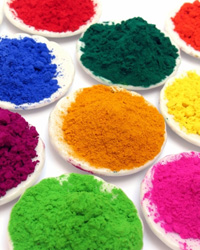Eco-friendly dyes for the European colour industry
The colour industry synthesises dyes to be used on textiles, plastics, foods and cosmetics, to name only a few. Although the industry was thriving in Europe until the end of the 20th century, increasing labour costs and stricter environmental legislation has resulted in displacement of much of the industry to the developing world. The colour industry has traditionally used dyes and chemical synthesis pathways that can result in toxic wastewater dangerous to living organisms. In addition, it has suffered from a lack of innovation regarding new non-toxic approaches. Researchers on the ‘Novel sustainable bioprocesses for the European colour industries’ (Sophied) project set out to employ a biotechnological approach to bring the European colour industry into the 21st century and thus enhance competitiveness while protecting the environment. Researchers successfully developed new bioprocesses for Ecocolourant TM synthesis relying on the action of biological enzymes under mild conditions rather than dangerous chemicals under harsh conditions. In addition, new equipment was developed to take advantage of the bio-enzymatic synthesis. The consortium also developed new methods to test the colourants for health and safety. A cytotoxicity test (toxicity to human cells) replaced the use of animals with laboratory cell lines. A modification of the standard mutagenicity test (ability to induce mutations) was developed yielding significant savings in terms of samples, time and money. Overall, more than 600 microorganisms and enzymes were evaluated. Application of the results has the potential to revive the European colour industry as well as to encourage sustainable manufacturing in other countries by providing safe, cost-effective solutions for colour synthesis.







